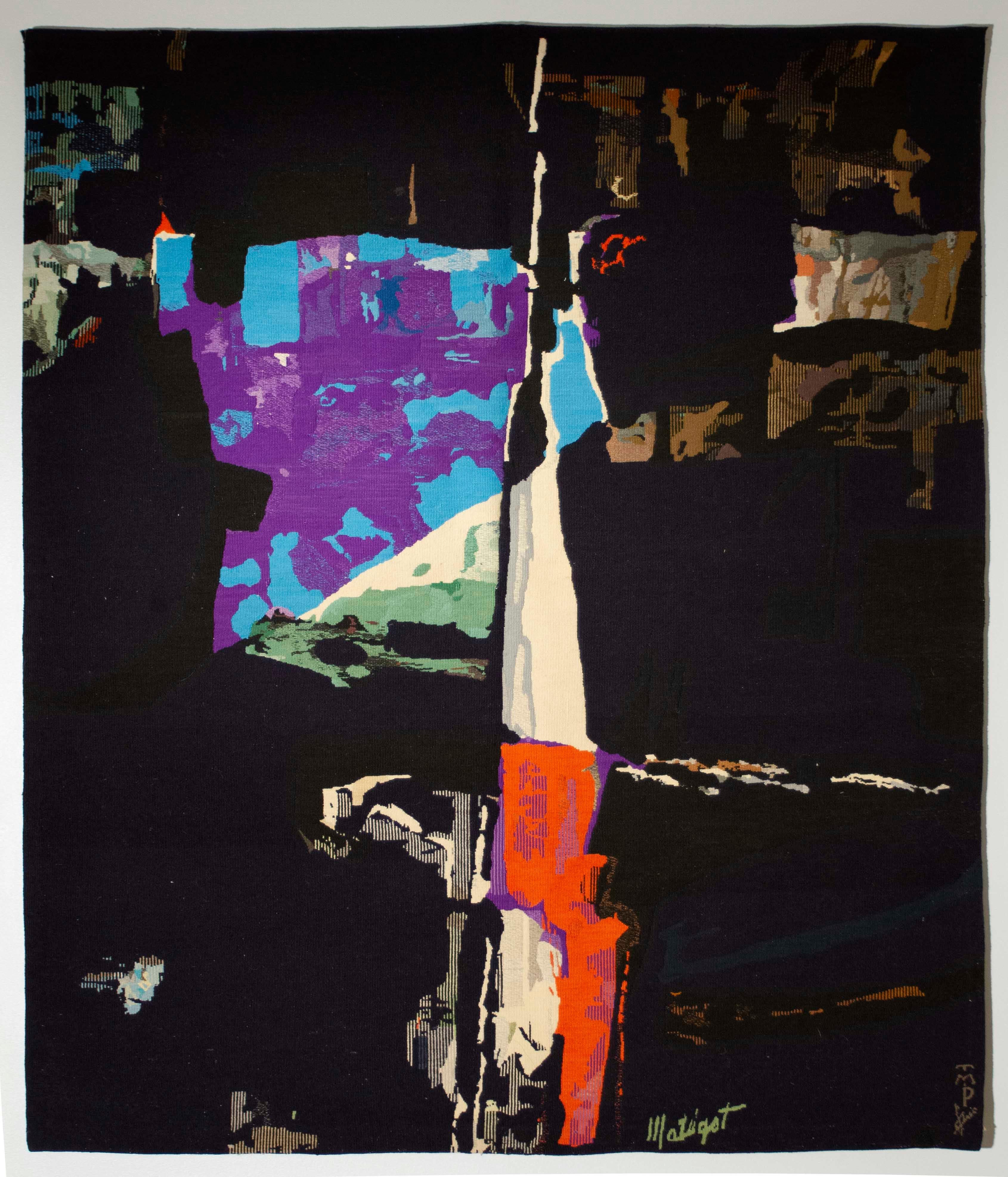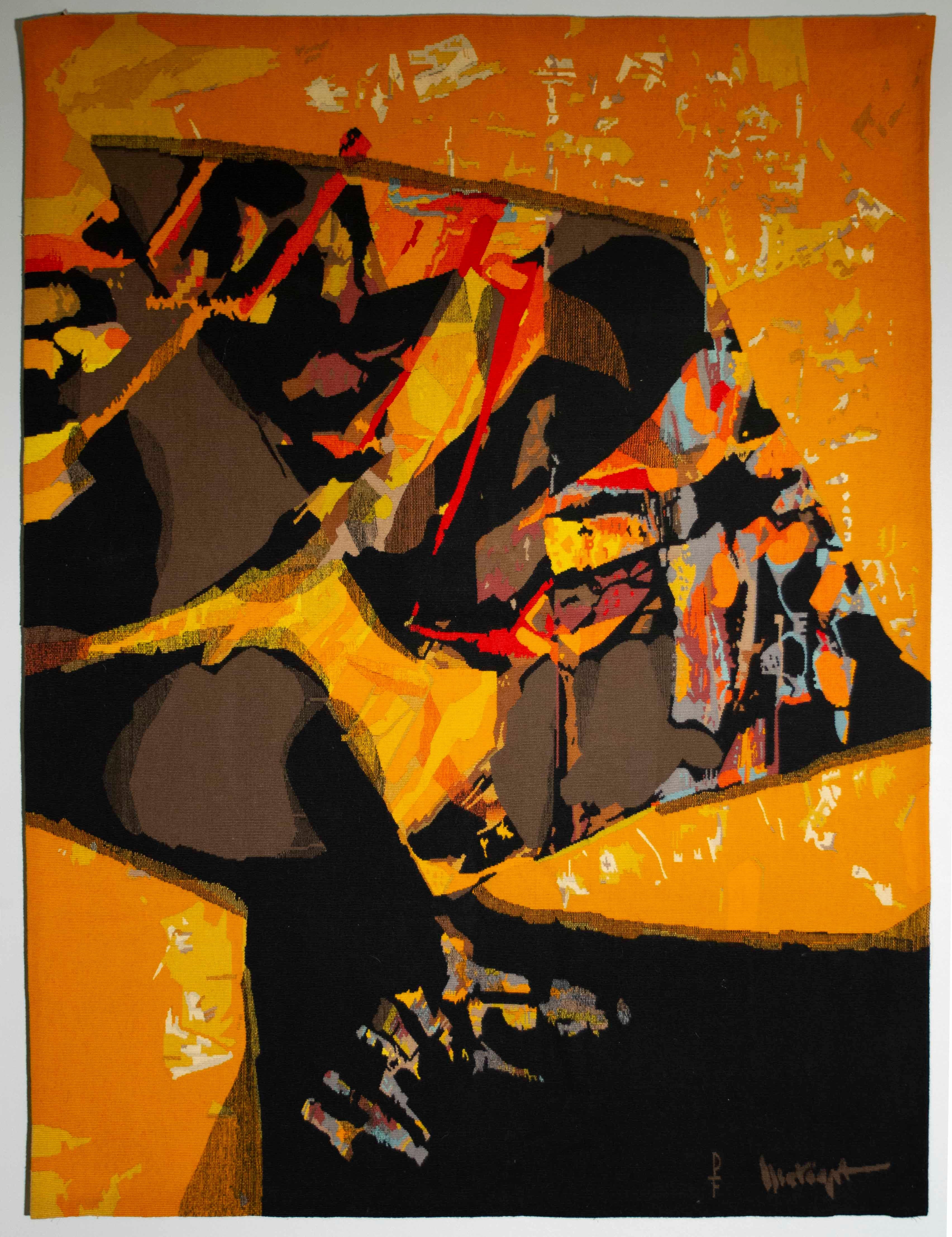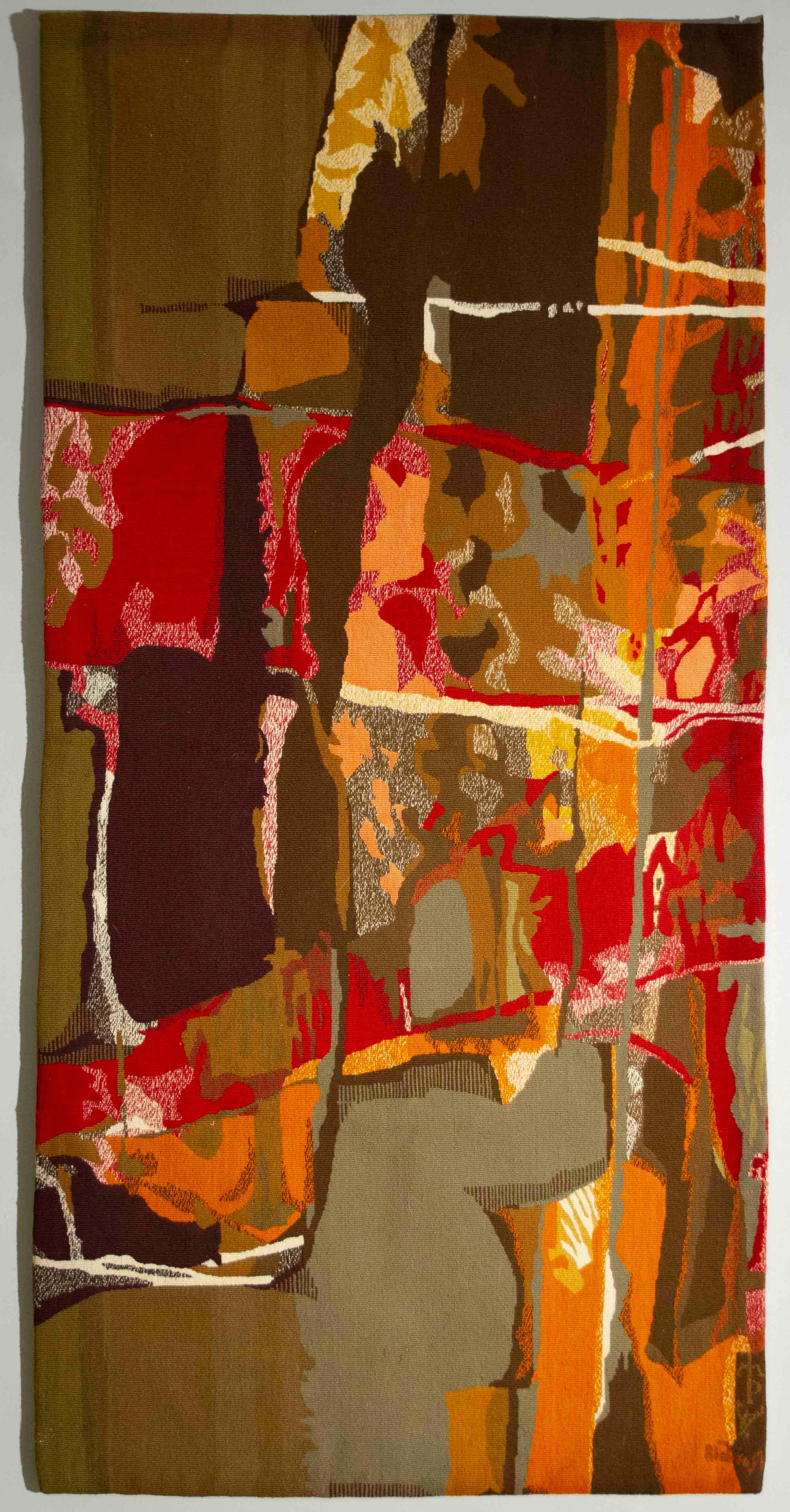Items Similar to Late 19th Century Needlepoint - The Binding of Isaac
Want more images or videos?
Request additional images or videos from the seller
1 of 6
UnknownLate 19th Century Needlepoint - The Binding of IsaacUnknown
Unknown
About the Item
A needlepoint work depicting the Old Testament story of the Binding of Isaac. A messenger from God halts Abraham in the sacrifice of his son, causing the knife to fall from his hand. Presented in an ornate gilt frame with foliate strapwork.
- Creation Year:Unknown
- Dimensions:Height: 30.71 in (78 cm)Width: 23.94 in (60.8 cm)
- Medium:
- Period:
- Condition:There are some small areas of loss to the thread at the upper-left and upper-right edges. There are some scuffs and scratches to the frame.
- Gallery Location:Corsham, GB
- Reference Number:
About the Seller
4.9
Platinum Seller
These expertly vetted sellers are 1stDibs' most experienced sellers and are rated highest by our customers.
Established in 2010
1stDibs seller since 2018
857 sales on 1stDibs
Typical response time: 5 hours
- ShippingRetrieving quote...Ships From: Corsham, United Kingdom
- Return PolicyA return for this item may be initiated within 30 days of delivery.
More From This SellerView All
- Late 19th Century Embroidery - A Timeless LoveLocated in Corsham, GBA charming petit point needlework from the late 19th Century, showing a heartwarming scene of an elderly couple sitting in a close embrace in their home with the cat and dog at their...Category
19th Century More Art
MaterialsTapestry
- 20th Century Embroidery - Peacocks And PeoniesLocated in Corsham, GBAn exquisite 20th Century embroidery using the most beautiful silk threads. The colours of the threads a wonderfully bright and the flat, directional stitches give the embroidery mov...Category
21st Century and Contemporary More Art
MaterialsTapestry
- Framed 19th Century Embroidery - Petit Point Embroidery and BeadworkLocated in Corsham, GBA fine survival, this original 19th Century petit point embroidery with extensive beadwork shows two figures surrounded by a scrolling foliate border. Well-presented in a deep gilt w...Category
19th Century More Art
MaterialsTapestry
- 19th Century Embroidery - Christ with Mary MagdaleneLocated in Corsham, GBThis fine silk work piece depicts Jesus Christ and Mary Magdalene in a walled garden. Completed in fine detail using various embroidery techniques to create different textures. Unsig...Category
19th Century More Art
MaterialsTapestry
- Framed Early 19th Century Embroidery - Greek Classical SceneLocated in Corsham, GBAn outstanding early 19th Century silkwork embroidery on fabric canvas, with watercolour painted figures, depicting a classical bearded gentleman with a young girl in traditional dress. The scene has a religious air, with the girl pointing upwards towards the heavens. This work may depict the rise of Christianity over dominant Greek polytheism, with large columns seen in the background. Several gold objects...Category
19th Century More Art
MaterialsTapestry
- American Early 19th Century - Silkwork Picture with FiguresLocated in Corsham, GBRare American silkwork picture. Presented in a charming gilt-effect frame with glazing. On linen.Category
Early 19th Century More Art
MaterialsTapestry
You May Also Like
- Mathieu Matégot - Apollo, tapestry, french, modern, abstract, aubusson, designBy Mathieu MatégotLocated in London, GBMathieu Matégot (1910-2001) Apollo c.1950s Aubusson tapestry, Manufactura de Tapeçarias de Portalegre; edition 3 of 6 142 x 118 cm signed ‘Matégot’ with the Manufactura de Tapeçarias de Portalegre monogram (lower right); titled, inscribed, numbered and signed (workshop label on the verso) Price: $13,000 USD Provenance: Barry Friedman Ltd, New York (stock no. BF19383.3) Notes: Mathieu Matégot was a Hungarian-born French designer, architect and artist. After studying at Budapest's School of Fine Arts in 1929, Matégot travelled across Italy and the USA until settling in Paris in 1931 where he worked as a set designer, window dresser and tapestry maker. Matégot volunteered for the French resistance at the start of the Second World War, only to be captured by the Nazis. A dreadful fate for most, however, it was during his time as a prisoner of war that the artist discovered metalworking techniques (such as Rigitulle) which he later patented and became renowned for. Upon his release, Matégot was awarded French citizenship. After the war, the artist's interest in tapestry was renewed after being introduced to contemporary tapestry revivalist, Jean Lurçat. However, in order to make ends meet, Matégot pursued furniture design; he established a workshop in Paris and dedicated his time to translating the groundbreaking metal techniques into popular handcrafted objects. In 1959, Matégot abandoned furniture design and focused exclusively on his passion for abstract tapestries. He continued his work as a pioneer of French Modern...Category
1950s Abstract More Art
MaterialsTapestry
- Mathieu Matégot - Castille, tapestry, french, modern, abstract, aubusson, designBy Mathieu MatégotLocated in London, GBMathieu Matégot (1910-2001) Castille c.1950s Aubusson tapestry, Pinton Frères; (probably) unique 156 x 120 cm signed ‘Matégot’ and with the Pinton Frères monogram (lower right); titled, inscribed, numbered and signed (workshop label on the verso) Price: $14,000 USD Provenance: Barry Friedman Ltd, New York (stock no. BF11410) Notes: Mathieu Matégot was a Hungarian-born French designer, architect and artist. After studying at Budapest's School of Fine Arts in 1929, Matégot travelled across Italy and the USA until settling in Paris in 1931 where he worked as a set designer, window dresser and tapestry maker. Matégot volunteered for the French resistance at the start of the Second World War, only to be captured by the Nazis. A dreadful fate for most, however, it was during his time as a prisoner of war that the artist discovered metalworking techniques (such as Rigitulle) which he later patented and became renowned for. Upon his release, Matégot was awarded French citizenship. After the war, the artist's interest in tapestry was renewed after being introduced to contemporary tapestry revivalist, Jean Lurçat. However, in order to make ends meet, Matégot pursued furniture design; he established a workshop in Paris and dedicated his time to translating the groundbreaking metal techniques into popular handcrafted objects. In 1959, Matégot abandoned furniture design and focused exclusively on his passion for abstract tapestries. He continued his work as a pioneer of French Modern tapestry...Category
1950s Abstract More Art
MaterialsTapestry
- Mathieu Matégot - Sans titre, tapestry, french, modern, abstract, wool, designBy Mathieu MatégotLocated in London, GBMathieu Matégot (1910-2001) Sans titre c.1950s wool tapestry, Manufactura de Tapeçarias de Portalegre 150 x 70 cm signed ‘Matégot’ and with the Manufactura de Tapeçarias de Portalegre monogram (lower right) Price: $11,000 USD Provenance: Barry Friedman Ltd, New York (stock no. BF21324) Notes: Mathieu Matégot was a Hungarian-born French designer, architect and artist. After studying at Budapest's School of Fine Arts in 1929, Matégot travelled across Italy and the USA until settling in Paris in 1931 where he worked as a set designer, window dresser and tapestry maker. Matégot volunteered for the French resistance at the start of the Second World War, only to be captured by the Nazis. A dreadful fate for most, however, it was during his time as a prisoner of war that the artist discovered metalworking techniques (such as Rigitulle) which he later patented and became renowned for. Upon his release, Matégot was awarded French citizenship. After the war, the artist's interest in tapestry was renewed after being introduced to contemporary tapestry revivalist, Jean Lurçat. However, in order to make ends meet, Matégot pursued furniture design; he established a workshop in Paris and dedicated his time to translating the groundbreaking metal techniques into popular handcrafted objects. In 1959, Matégot abandoned furniture design and focused exclusively on his passion for abstract tapestries. He continued his work as a pioneer of French Modern tapestry...Category
1950s Abstract More Art
MaterialsTapestry
- Mathieu Matégot - Oberon, tapestry, french, modern, abstract, wool, designBy Mathieu MatégotLocated in London, GBMathieu Matégot (1910-2001) Oberon c.1950s wool tapestry, Manufactura de Tapeçarias de Portalegre; (possibly) no. 2 125 x 202 cm signed ‘Matégot’ and with the Manufactura de Tapeçarias de Portalegre monogram (lower right); titled, inscribed, numbered and signed (workshop label on the verso) Price: $18,000 USD Provenance: Barry Friedman Ltd, New York (stock no. BF19387) Notes: Mathieu Matégot was a Hungarian-born French designer, architect and artist. After studying at Budapest's School of Fine Arts in 1929, Matégot travelled across Italy and the USA until settling in Paris in 1931 where he worked as a set designer, window dresser and tapestry maker. Matégot volunteered for the French resistance at the start of the Second World War, only to be captured by the Nazis. A dreadful fate for most, however, it was during his time as a prisoner of war that the artist discovered metalworking techniques (such as Rigitulle) which he later patented and became renowned for. Upon his release, Matégot was awarded French citizenship. After the war, the artist's interest in tapestry was renewed after being introduced to contemporary tapestry revivalist, Jean Lurçat. However, in order to make ends meet, Matégot pursued furniture design; he established a workshop in Paris and dedicated his time to translating the groundbreaking metal techniques into popular handcrafted objects. In 1959, Matégot abandoned furniture design and focused exclusively on his passion for abstract tapestries. He continued his work as a pioneer of French Modern tapestry...Category
1950s Abstract More Art
MaterialsTapestry
- Marco, Mid-Century Polish Tapestry by Zofia ButrymowiczLocated in Wilton, CTZofia Butrymowicz (1904-1987, Warsaw, Poland) was one in a select group of Polish textile artists who were first introduced in Chicago, USA in the 1970s by legendary dealers Anne and Jacques Baruch. Butrymowicz's body of work continues to influence the fiber art world to this day. "New experiments in art have always been of interest to me" Butrymowicz once observed, "whether I agree with them or not, and therefore I never pass by and I am never indignant at any expression in art. I strongly believe that in the wide range of experiments there will also be some elements of the development of culture." During the post-war period, when the countries of Eastern Europe were locked down behind the Iron Curtain, weavers there found materials in short supply. As a result, many of these artists turned to unconventional materials such as metal, paper and reeds. Zofia Butrymowicz, of Poland, recognized for innovative works in 60s and 70s, used heavy, irregular wools, barely spun at all. In 1969, she visited Canadian weaver, Mariette Rousseau-Vermette and her husband, painter and ceramicist, Claude Vermette, outside Montreal where the couple lived and worked. Zofia and Mariette had both been participants in International Tapestry Biennials in Lausane, Switzerland in the 60s and in Wall Hangings at the MoMA in New York in 1969. Butrymowicz stayed with the Vermettes for several months, using Mariette’s looms to create tapestries that were displayed with Claude’s ceramics at a local gallery. Butrymowicz used wool from Mariette’s source. Mariette was particular about the color and intensity of her wool — she worked with technicians to perfect the spinning and dyeing so that the wool had a silky luster and dyed “more beautifully” than mechanically spun wool. The wool was a marked departure from the material Butrymowicz had access to in Poland. She “painted” her weavings with colors and shadings of yarns, including only a shimmering suggestion of a shape, often a circle, as she had done in the past, but the glisten and sumptuousness of the yarn in these works set them apart from her previous weavings. Selected exhibitions: Central Museum of Textiles, Lodz, Poland; Museum of Contemporary Art, Chicago, Illinois; National Museum, Poznan, Poland; National Museum, Warsaw, Poland; Skopje Museum of Contemporary Art, Poland; Exempla, Munich, Germany; Museum of Modern Art, Pasadena, California; Pierre Pauli...Category
1960s Modern Abstract Sculptures
MaterialsFabric, Textile, Tapestry, Wool
- Gobelin In Memory of My Mother, Rare Handmade Polish TapestryBy Aleksandra ManczakLocated in Surfside, FL57.5 inches x 57.5 inches Aleksandra Mañczak (born 1948) is an artist and teacher. From 1969 to 1974 she attended the Strzeminski Academy of Fine Arts and Design in Lodz, Poland. In 1974 she became an assistant at the Fiber-Art Studio and in 1983 she became the head of the same Fiber-Art Studio. In 1990 she became an assistant professor In 1995 she became a full professor (Professor of Art). From 1993 to 1996 she was the Deputy Rector for Science and Promotion at the Academy. Artistic Activity: photography, (since 2001 digital images), fiber-art, soft sculpture, paper-art assemblage, installation (including open-air), and writing about visual art, fiber-art and installation. She has had one-person shows in 1977, 1988, 1991, 1993, and every year since 1995. location: Lodz, Poland The year 1972 was also the time when Stefan Popławski’s (a graduate of Academy of Fine Arts in Poznań) piece was created. His simple Self-portrait is a very important interpretation, made in tapestry (162 x 90 cm), of a photograph from a family album. The artist frequently used famous documentary and historical pictures, as well as stills from the movies made by distinguished directors, and press photos. He transformed these selected “films of reality” into cycles: a series of photography reconstructions, movie “pictures,” old performances (Polish banners) and contemporary events. these works got the impact force of a monumentalized...Category
20th Century Modern More Art
MaterialsTapestry
Recently Viewed
View AllMore Ways To Browse
Art Of The 19th Century
Ornate Gilt Frame
Antique Binding
Old Testament
Old Testament Art
Framed Needlepoint
Antique Old Knife
Antique Framed Needlepoint
19th Century Needlepoint Framed
Fall Tapestry
Antique Needlepoint Art
Abraham Isaac
Sacrifice Of Isaac
Animation Cel
Vintage Alien
Vintage Bug
Vintage Bugs
Bug Vintage




